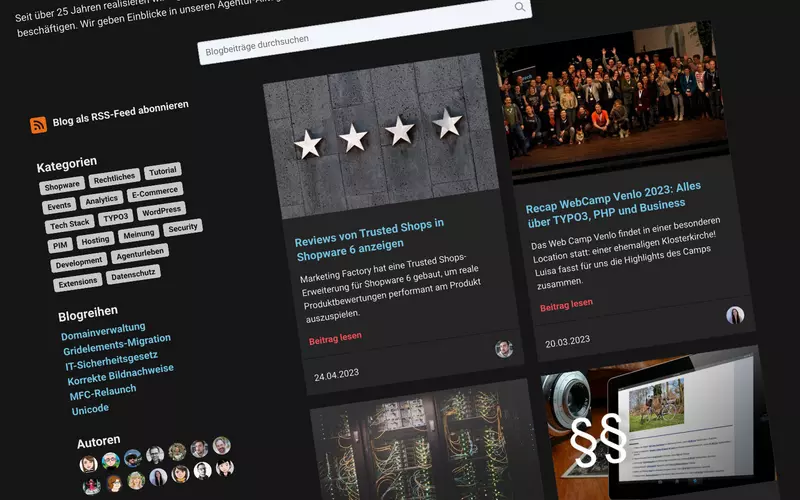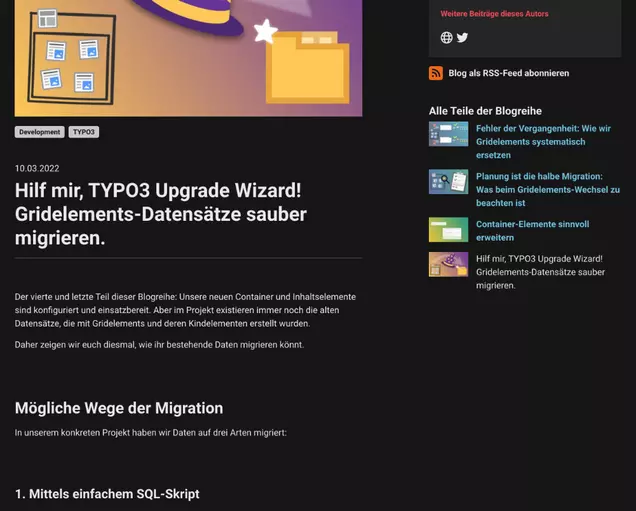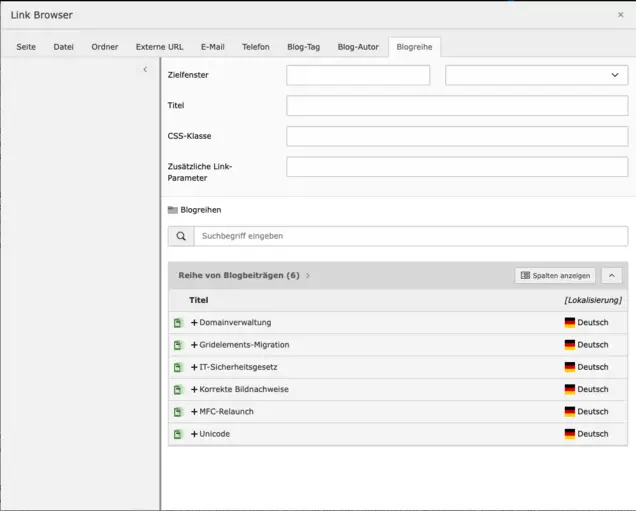
Behold our new and brilliant blog!

Our long-standing companion: Goodbye, WordPress
Marketing Factory's previous blog had been running on WordPress since 2011. During this time, more than 200 published articles have accumulated! That makes you think twice about whether you want or need to migrate to another system.
Then why do the aforementioned switch to TYPO3? After all, WordPress has its strengths especially in maintaining a blog. It provides everything to get started right away: Articles, categories, keywords, authors …
How we weigh the pros and cons of WordPress and TYPO3 in general, Luisa already explained once in this article. In the end, we always check which tool best suits the needs of a project. And in our case, a particularly close integration between the blog and website was important to us.
Which were the reasons to switch to TYPO3?
We have always been interested in the connection between WordPress and TYPO3. For example, on each customer reference page in our TYPO3 website, matching WordPress articles and categories are linked.
However, with the ever-deepening connection between blog and website, the media disruption eventually became a technical obstacle.
Over the years, several shortcomings in the blog have also emerged.
Drawbacks from the editor's point of view:
- Content editing in TYPO3 and WordPress is fundamentally different (as we've compared before in this article).
- The available text markup and styling options differ between the two RTEs.
- Content cannot be used across systems; images and image credits must be maintained multiple times.
- There is no way to assign multiple authors to an article (as is quite common for event recaps from us).
Issues from a technical point of view:
- Operating both TYPO3 and WordPress increases maintenance effort.
- Providing a cross-system search is a possible but cumbersome task.
- In WordPress, a multilingual blog is only possible through plugins.
- We set high standards for frontend and backend security. But WP themes and plugins, for instance, often do not take a strict Content-Security-Policy into account.
By integrating the blog directly into TYPO3, we were able to solve these and other issues. In addition, we could use the existing frontend – the stylesheet of the corporate website only had to be slightly extended to cover the blog.
The blog extension as a salvation
After we decided to switch to a blog solution within TYPO3, the new technical basis had to be clarified.
The tried and tested News extension? It fulfilled many of our requirements. But the WordPress articles already had a very variable structure with many images within the text. This would require linking them as content elements in the news record – rather inconvenient in terms of editing. Better in that case is a page-based approach, in which any kind of content elements can be used. There are several extensions of this kind.
We eventually decided to use the blog extension from TYPO3 GmbH, which some of us had already had some experience with.
Advantages of the extension:
- Coverage of the basics (categories, authors etc.)
- Close integration into an existing, very individual frontend
- Great flexibility through page-based articles with TYPO3 content elements


Conceptual changes
Bilingual blog
From now on, we will publish our blog posts (with exceptions) in German and English language to make them accessible to a broader audience.
Some articles in English language already existed in WordPress. During the migration process we subsequently translated a larger number of existing articles.
Clear structures
The new blog front page is designed to provide an overview of available content. In addition to the list view in card style, there are various filter options and a search function solely for blog posts.
The former categories and tags have been rigorously pruned. From now on, there will only be categories.
We have written interrelated blog series on some topics, such as image credits or Gridelements migration. In the past, we had to link these manually. In TYPO3, we added a new record type for blog series that we can assign to the corresponding blog posts.
Conclusion
With the migration, we have simplified the future maintenance and administration of the blog. Technical functions such as cookie consent no longer have to be implemented twice.
For visitors to the blog, the new front page offers a much better overview. The transition between blog and website is seamless at all points. Needless to say, we also took the opportunity to improve usability and semantics.
And as a gift to ourselves: with the new layout and the many design capabilities, blogging is now even more fun!
We hope you like our new blog and you will find many helpful and interesting articles here!
Please feel free to share this article.
Comments
No comments yet.